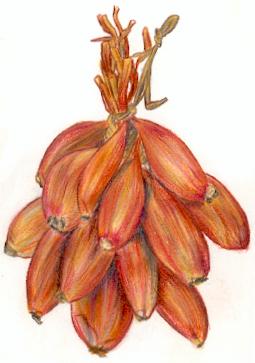
'
Shallot
Shallots are one of the easiest vegetables to grow. There is evidence that they were a common ingredient in ancient Egyptian cooking and were widely grown in both Greek and Roman gardens. The varieties that we use today are probably more or less the same as those used by people thousands of years ago.
They are close relatives of the onion but develop in a different way. You plant a single bulb which divides over the course of the summer to give a clump of up to ten bulbs of similar size. There is very little risk of shallots flowering and they are not as susceptible to disease as some varieties of onions.
Planting In the South, Shallots can be planted in January or February: in the North it is best to wait until March.
Shallots prefer well-drained soil with plenty of sun, but will do quite well in most spots in the garden. You can grow them at the edge of a flower bed or in any patch of ground that you have free.
When you buy shallots for planting, try to get bulbs that are firm: soft bulbs are more likely to rot in the ground.
Plant the bulbs 4 to 6 inches (10 to 15cm) apart in rows 12 inches (30 cm) apart. Leave the tip of the bulb sticking up above the ground.
Care of the Plants Check the plants regularly after planting, sometimes they are pulled up by birds but they are not usually eaten. Bulbs that have been disturbed can be pushed back into place.
Weed round the plants during the Spring.
Harvesting The leaves will start to turn yellow in Summer - usually in July - and the shallots can then be picked. The bulbs need to be allowed to dry if you want to store them over the Winter. If the weather is hot and sunny, they can be dried outdoors but if it is raining they need to be laid out in a dry, airy place - such as a garage - for a few days.
After this the clumps can be divided up. You can tie the bulbs together (as in the picture) or store them in a basket. Shallots keep well and should last right through the Winter. Any bulbs that you don't use can be planted the following Spring.